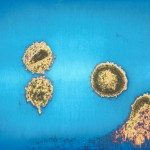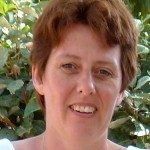Link to Pubmed [PMID] – 12853740
AIDS 2003 Jul;17(11):1585-96
OBJECTIVE: The acute phase of HIV and SIV infections leads to a host/virus equilibrium, and accumulating evidence suggests that this early phase dictates further progression towards AIDS. To gain insight into the early events that determine rapid disease progression, we performed a longitudinal study in the SIV rhesus macaque model, allowing an in-depth analysis of the primary stage of infection.
METHODS: We assessed viral replication (quantification of replicating and infected cells in lymph nodes, plasma viral load), immune response (cytotoxic T lymphocyte, antibody, proliferative responses), apoptosis and cycling cells (Ki-67 labelling) on lymph nodes and blood in nine rhesus macaques infected with the pathogenic SIVmac251 isolate.
RESULTS: Six primates remained asymptomatic during the one year follow-up period of the study, whereas three developed AIDS within 5-6 months. During the first 2 weeks of infection, peak numbers of apoptotic cells in the lymph node T-cell areas were significantly higher in the three future rapid progressors than in the six future slow progressors, and were correlated with subsequent viraemia levels measured 6 months after infection. The numbers of infected or cycling cells in the same lymph node T-cell areas, however, only became significantly different in future rapid and slow progressors 8 weeks after infection, at the end of the primary phase.
CONCLUSION: Our findings identified extensive apoptosis induction in peripheral lymphoid organs as an early and predictive event that may play a crucial role in impairing the capacity of the immune system to control viral replication and progression towards disease.

